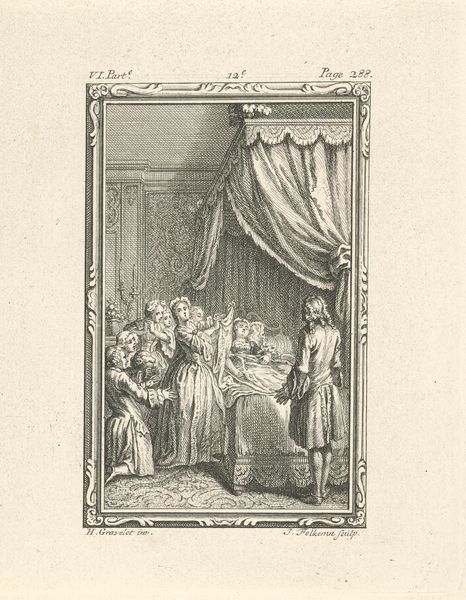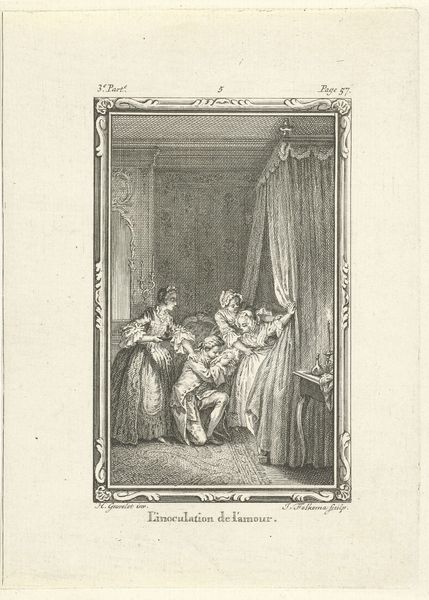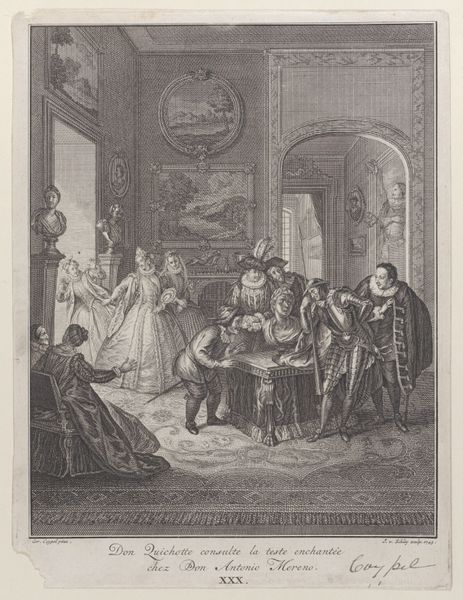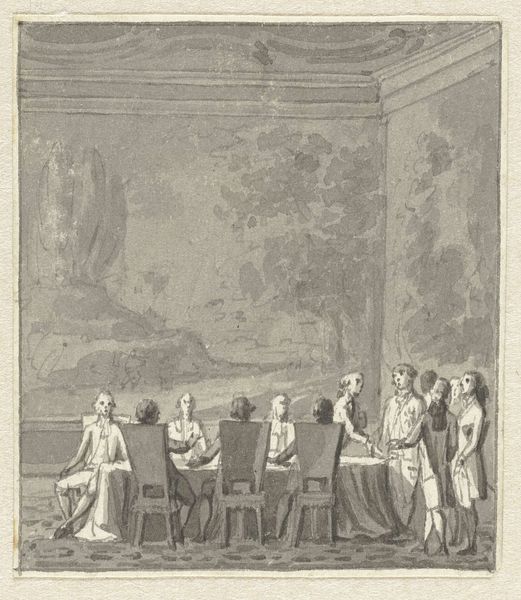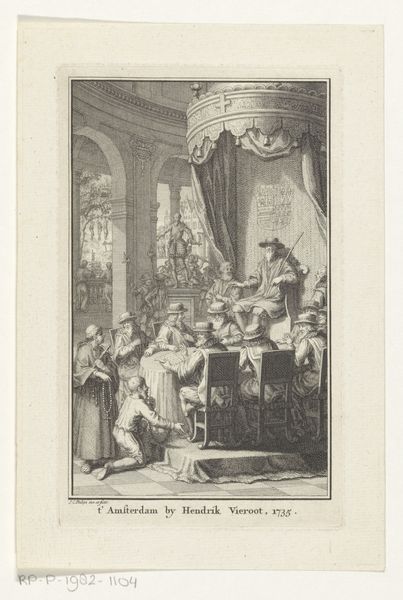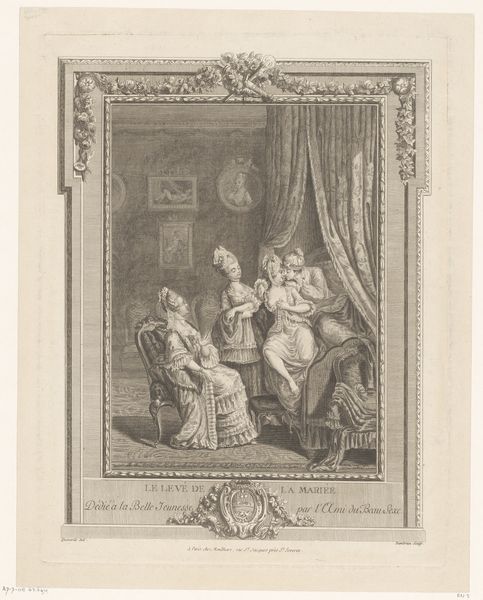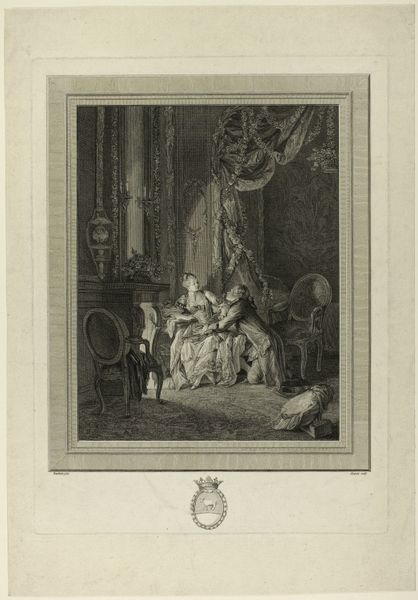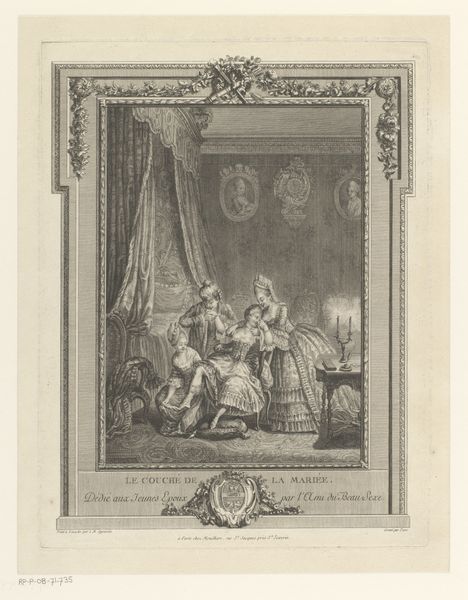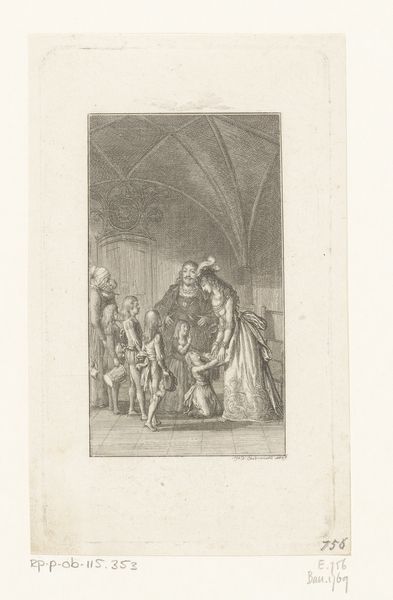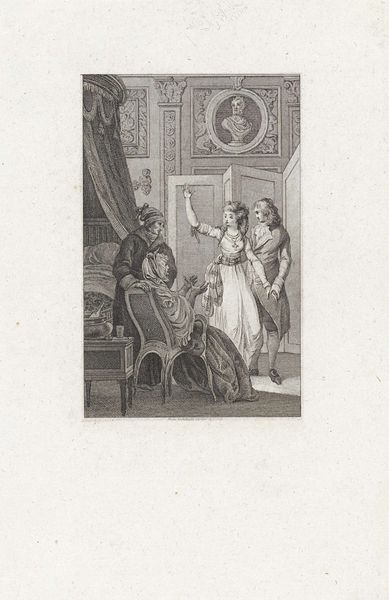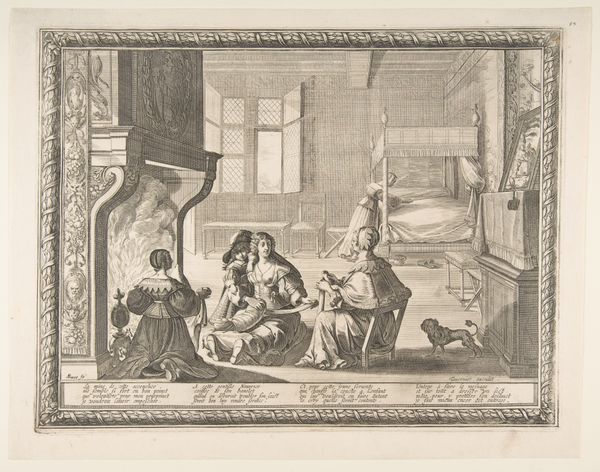
Dimensions: height 158 mm, width 125 mm
Copyright: Rijks Museum: Open Domain
Editor: This engraving, "Gezelschap met kinderen in een interieur" or "Company with Children in an Interior," was created in 1761 by Jacob Folkema. It feels quite staged, almost like a theatrical production. What strikes you about this print? Curator: I am drawn to the material reality of this piece. Folkema’s engraving reveals a whole production process. Consider the labor involved: the initial design, the meticulous carving into the plate, the printing process itself. We see a slice of elite society, but can’t ignore the material conditions that allow such a scene to be captured and disseminated. How does this distribution through prints change how the scene is read? Editor: I see what you mean! The engraving makes the image reproducible, allowing it to circulate amongst a wider, perhaps less affluent, audience. Did this reproducibility influence its meaning or purpose? Curator: Absolutely. The circulation of images like this reinforces a system of consumption and aspiration. Think about the very act of making a print – the choice of subject matter, the level of detail, even the quality of the paper and ink - all speak to a specific social and economic context. How might the cost of producing and acquiring such an image influence its perceived value and the way it was consumed? Editor: So, the material is not neutral; it conveys value, shaping who could access it and, therefore, the depicted lifestyle. It really shifts how one views a scene of domestic life! I'm looking at the scene beyond the surface of an idealized interior. Curator: Precisely. It makes you consider who is being represented, who is doing the representing, and for what purpose. Editor: I hadn't thought about art this way before, in terms of labour and consumption. Thank you!
Comments
No comments
Be the first to comment and join the conversation on the ultimate creative platform.

